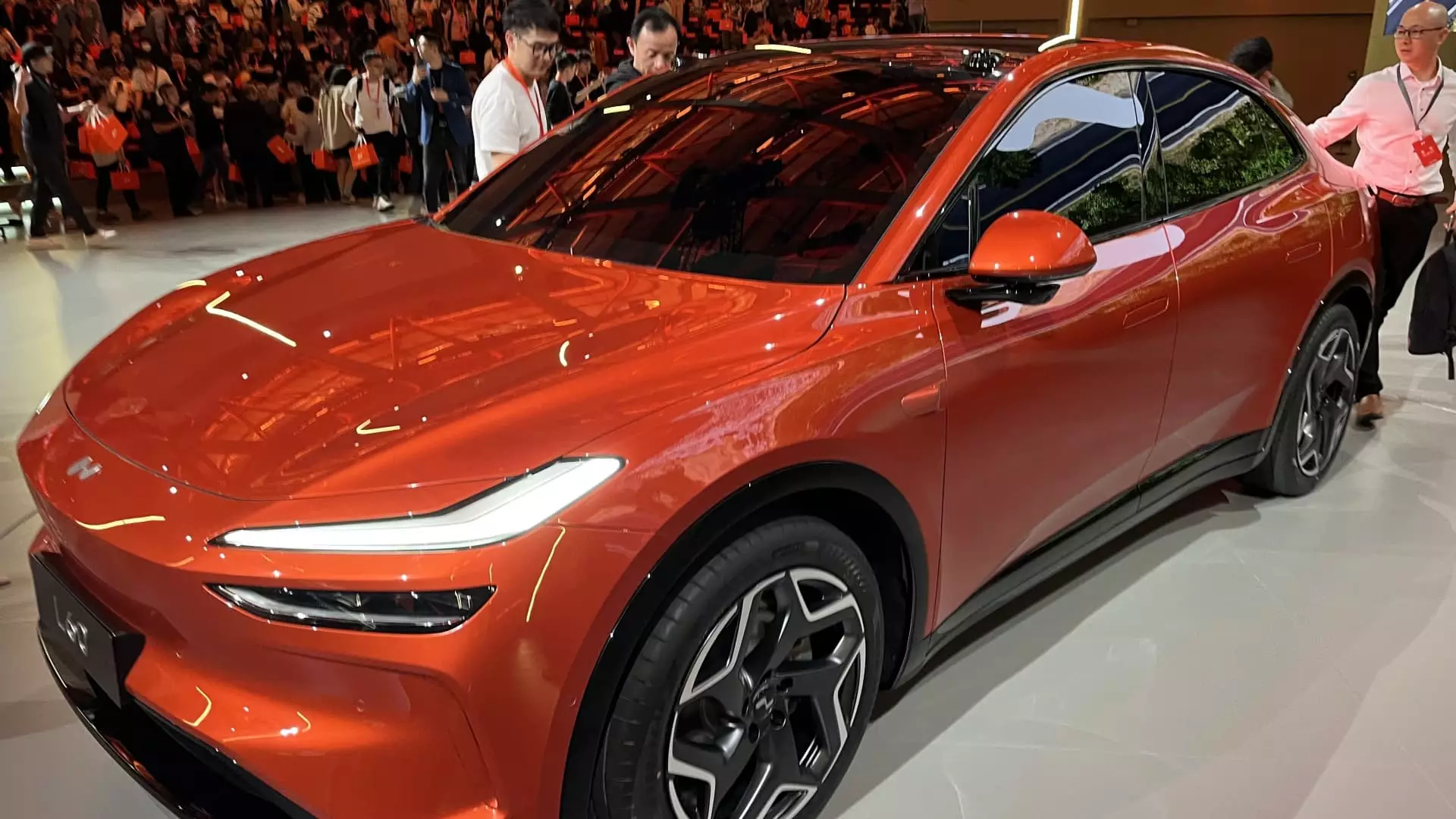The electric vehicle (EV) market in China is witnessing an unprecedented transformation, fueled by a slew of new entrants vying for a share of the pie, particularly against established players like Tesla. Among the latest contenders, Onvo—a subsidiary of the premium EV producer Nio—has launched the aggressively priced L60 SUV, marking a significant entry into the fiercely competitive landscape of budget-friendly electric vehicles. This article delves into the implications of this launch, market strategies, and the broader trends shaping the Chinese EV market.
Onvo’s flagship model, the L60, is making headlines not just for its competitive pricing but also for its unique business approach to battery ownership. Starting at just 149,900 yuan (approximately $21,210), buyers can choose to subscribe to a battery service for 599 yuan per month. This innovative model makes acquiring an electric vehicle more accessible to a wider audience by reducing the upfront cost of ownership. Furthermore, the complete package including the vehicle and battery comes in at 206,900 yuan, still undercutting Tesla’s Model Y, which starts at 249,900 yuan in the same market.
This attractive pricing model aims to attract budget-conscious consumers in China, who are increasingly shifting their buying preferences towards electric options. In an environment where price sensitivity is paramount, Onvo’s strategy to appeal to this demographic by reducing upfront costs may significantly bolster its market position.
The entry of Onvo into the market signals intensified competition among Chinese EV manufacturers. Besides Tesla, established brands like Geely-backed Zeekr and Xpeng are rolling out their models aimed at lower and mid-tier consumers. For instance, Zeekr recently introduced its 7X SUV, priced at 239,900 yuan, while Xpeng’s new Mona M03 coupe starts at an even lower 119,800 yuan — underscoring a market rush driven by competitive pricing.
These brands are increasingly innovating not just in vehicle design but also in offering advanced driver-assist features while keeping costs in check. As consumers demand more from their vehicles—ranging from superior driving ranges to intelligent assistance technologies—the success of these manufacturers will hinge on balancing affordability with technological advancements.
While domestic competition heats up, Nio is not overlooking international expansion, especially given the upcoming changes in the European Union’s tariff regulations. As of November, a new wave of tariffs will impact the affordability of Chinese EV imports, making it imperative for companies like Nio to rethink their strategies in Europe. Despite these challenges, Nio’s commitment to a long-term vision remains evident. The company is focusing on existing markets and expanding its presence, including the establishment of power swap stations across Europe.
Nio’s CEO, William Li, has shared insights into the company’s strategy, emphasizing the importance of patience and gradual growth in a foreign market that is distinctly different from China. Building a premium brand in Europe is no small feat, but Nio aims to solidify its presence and leverage the advantages of its innovative technologies and extensive product lineup.
With a targeted goal of achieving 10,000 monthly deliveries of the L60 by December and ambitious plans to double that figure in the following year, Onvo is looking to position itself as a strong player in the EV market. The emphasis on maintaining a vehicle margin of around 15% is critical for sustainable growth as it ventures into an increasingly volatile market landscape.
In addition, Onvo’s plans for expansion indicate a keen competitive spirit, with intentions to establish over 200 stores across China by year-end. This not only reflects the brand’s commitment to consumer accessibility but also signifies a broader trend within the industry—companies are recognizing the importance of building a robust sales and service infrastructure to support customer needs in an evolving digital landscape.
The emergence of Onvo and other budget-friendly offerings in China’s EV market highlights a significant shift towards more accessible electric mobility options for consumers. With lower pricing, innovative business models, and a fierce competitive spirit, the landscape is transforming rapidly. As Nio and its subsidiaries carve their niche in this burgeoning market, it remains to be seen how they will navigate both domestic and international challenges. However, one thing is clear: the battle for the future of electric vehicles is just beginning, and affordability will be a driving force behind consumer choices in the years to come.

